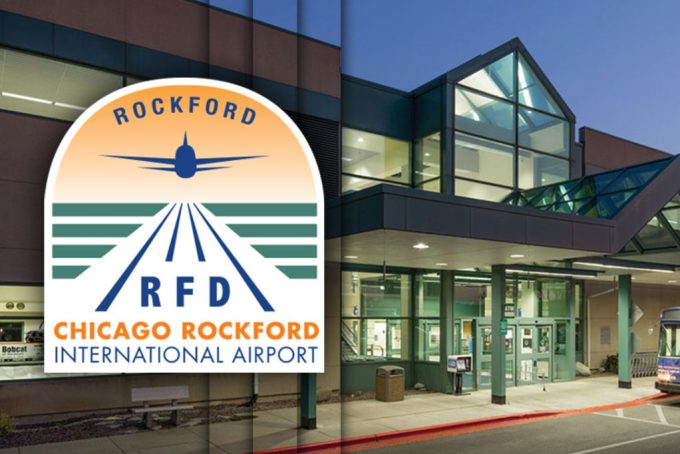Last-mile parcel carriers struggle while global express market is set for growth
The global express parcel market is set to see steady growth over the next four ...
TFII: SOLID AS USUALMAERSK: WEAKENINGF: FALLING OFF A CLIFFAAPL: 'BOTTLENECK IN MAINLAND CHINA'AAPL: CHINA TRENDSDHL: GROWTH CAPEXR: ANOTHER SOLID DELIVERYMFT: HERE COMES THE FALLDSV: LOOK AT SCHENKER PERFORMANCEUPS: A WAVE OF DOWNGRADES DSV: BARGAIN BINKNX: EARNINGS OUTODFL: RISING AND FALLING AND THEN RISING
TFII: SOLID AS USUALMAERSK: WEAKENINGF: FALLING OFF A CLIFFAAPL: 'BOTTLENECK IN MAINLAND CHINA'AAPL: CHINA TRENDSDHL: GROWTH CAPEXR: ANOTHER SOLID DELIVERYMFT: HERE COMES THE FALLDSV: LOOK AT SCHENKER PERFORMANCEUPS: A WAVE OF DOWNGRADES DSV: BARGAIN BINKNX: EARNINGS OUTODFL: RISING AND FALLING AND THEN RISING

The slump of the past 18 months has sent cargo throughput at most airports down, but those with a strong focus on cargo have fared better, a new study shows.
Cargo airports were soaring during the pandemic and subsequent supply chain disruption, but the drop in demand, coupled and rising bellyhold capacity was supposed to tilt the balance back to passenger gateways.
But this has not happened, at least in US domestic airfreight, according to a study by the Chaddick Institute of DePaul University.
Using data from the US Bureau of Transportation Statistics, the researchers looked at traffic development at the 16 largest US airports that are cargo-focused (defined as handling over 10,000 tons of domestic freight and fewer than 300,000 passengers a year) and compared the data with the statistics of large, mixed-purpose airports (handling over 10,000 tons of cargo but more than 300,000 passengers).
Chaddick’s data show traffic at cargo-focused airports (CFAs) declined 3.4%, whereas the decrease for mixed-purpose airports (MPAs) was 8.9%, more than twice as high. The decline for US airports overall was 9.1%.
Five out of the 16 CFAs actually showed gains in traffic, and ten outperformed the national average.
And the performance of the CFAs looks even stronger over the period from 2019 to this spring, with some more than doubling their traffic. Collectively, the 16 largest CFAs enjoyed volume growth of 53.6%, compared with 2.4% for MPAs and 12.2% for all US airports.
Their better performance in the April 22 to April 23 period propelled nine of the top 16 CFAs higher in the national cargo traffic rankings, while another three held their spots. Despite a marginal slip of 0.1%, Chicago-Rockford, the largest CFA, advanced three rungs to 14th largest US airport for domestic cargo, while Wilmington Air Park, San Bernardino and Toledo shot up the rankings.
All four benefited from parcel traffic. The study shows CFAs that host flights by Amazon or the integrated express carriers have been hit less hard by the downturn in overall demand, partly because this traffic is less prone to demand swings than general cargo, the authors note.
By the same token, all MPAs in the study that show traffic declines below 10% are hubs for Amazon, FedEx or UPS. The airport among them with the most significant rise in the rankings was Cincinnati (sixth to fourth-largest cargo airport), which has emerged as the main hub of Amazon Air.
Airports handling flights for the e-commerce giant fared better than others that host integrator traffic. For the 12 months to April, CFAs that are integrator hubs showed an average decline of 7.3%, whereas Amazon Air hubs saw an average drop of 1.7%.
One factor there would be the earlier flight cuts and fleet reduction moves by FedEx and UPS, while Amazon was still expanding its flight operations. Since the beginning of the year, Amazon has also stepped on the brakes, cutting contracts with two freighter operators (Western Global and Silver) and renewing only four out of ten expiring leases for B767 freighters with Air Transport Services Group.
The study shows cargo airports are more resilient than widely anticipated, and outperformed passenger gateways not only during the surge of 2020/21, but also in the downturn that followed. It would be interesting to see what a follow-up study a year on would look like – especially if it included cargo airports chosen by the air cargo arms of container shipping giants like Maersk and those picked by multinational forwarders for their dedicated freighter operations.
Comment on this article